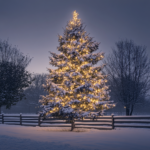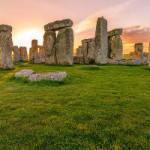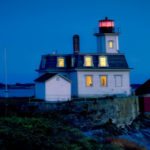Summer Solstice Facts
Summer Solstice Facts
Jun 15The summer solstice, a significant celestial event, marks the longest day and shortest night of the year. This phenomenon has been celebrated and revered by various cultures throughout history. Here are some fascinating facts about the summer solstice that highlight its importance and the unique ways it’s observed around the world.
What is the Summer Solstice?
The summer solstice occurs when one of Earth’s poles has its maximum tilt toward the Sun. It happens twice yearly, once in each hemisphere. In the Northern Hemisphere, it occurs around June 20th or 21st, while in the Southern Hemisphere, it takes place around December 21st or 22nd. During the summer solstice, the Sun reaches its highest position in the sky and appears to stand still before reversing its direction.
Historical Significance
1. Ancient Celebrations:
– The summer solstice has been celebrated for thousands of years. Ancient civilizations like the Egyptians, Greeks, and Romans held festivals to honor the Sun and its life-giving energy. For instance, the ancient Egyptians built the Great Pyramids to align with the solstice, while the Greeks celebrated it as part of their Kronia festival, dedicated to Cronus, the god of agriculture.
2. Stonehenge:
– One of the most famous solstice celebrations takes place at Stonehenge in England. This prehistoric monument is aligned with the solstice sunrise. Thousands of people gather there annually to witness the sunrise, a tradition that dates back to ancient times when it was believed to be a place of worship and astronomical observatory.
3. Midsummer Festivals:
– In many cultures, the summer solstice is synonymous with midsummer festivals. In Scandinavia, for example, Midsummer is a major holiday marked by dancing around the maypole, singing, and feasting. The Swedish Midsummer festival is especially famous for its vibrant celebrations.
Scientific Facts
1. Longest Day of the Year:
– On the summer solstice, the Northern Hemisphere experiences its longest day and shortest night. The exact duration of daylight varies depending on the latitude. For instance, at the Arctic Circle, the Sun does not set at all, resulting in a phenomenon known as the Midnight Sun.
2. Earth’s Tilt:
– The solstice occurs due to the tilt of Earth’s axis. Earth is tilted at an angle of approximately 23.5 degrees relative to its orbit around the Sun. This tilt causes different parts of the Earth to receive varying amounts of sunlight throughout the year, leading to the changing seasons.
3. Solar Path:
– On the day of the summer solstice, the Sun takes its longest and highest path through the sky. This results in the maximum amount of daylight. After the solstice, the days gradually become shorter until the winter solstice.
Cultural Traditions
1. Bonfires and Feasts:
– In many parts of Europe, bonfires are lit to celebrate the solstice. These fires are symbolic of the Sun’s power and are believed to ward off evil spirits. In Spain, the festival of San Juan is celebrated with large bonfires on the beach, accompanied by music, dancing, and fireworks.
2. Yoga Day:
– In modern times, the summer solstice is also celebrated as International Yoga Day. Initiated by the United Nations in 2015, this day promotes the practice of yoga for mental, physical, and spiritual well-being. Cities worldwide host mass yoga sessions, often in scenic outdoor locations.
3. Indigenous Celebrations:
– Many indigenous cultures in North America celebrate the summer solstice with traditional rituals and ceremonies. For example, the Native American tribes of the Great Plains hold sun dances, which are intricate ceremonies involving dancing, singing, and prayer to honor the Sun.
Fun Facts
1. Ancient Calendars:
– Many ancient calendars were based on the solstices. For instance, the Mayan calendar was intricately linked to the solar year, with solstices and equinoxes playing a crucial role in their timekeeping and agricultural planning.
2. No Shadow at Noon:
– At the Tropic of Cancer during the solstice, the Sun is directly overhead at noon. This results in no shadow being cast by objects on the ground, a phenomenon unique to the solstice.
3. Solstice Celebrations Worldwide:
– From the Inti Raymi festival in Peru, which honors the Sun god Inti, to the Fremont Solstice Parade in Seattle, featuring colorful costumes and body painting, the summer solstice is celebrated with a variety of vibrant and diverse festivities around the globe.
The summer solstice is more than just an astronomical event; it is a time of celebration, reflection, and connection with nature. Whether you are witnessing the sunrise at Stonehenge, dancing around a maypole in Sweden, or practicing yoga on a beach, the solstice offers a moment to honor the Sun and its vital role in our lives. As we bask in the longest day of the year, we are reminded of the ancient traditions and scientific marvels that make the summer solstice a truly unique and universal experience.






